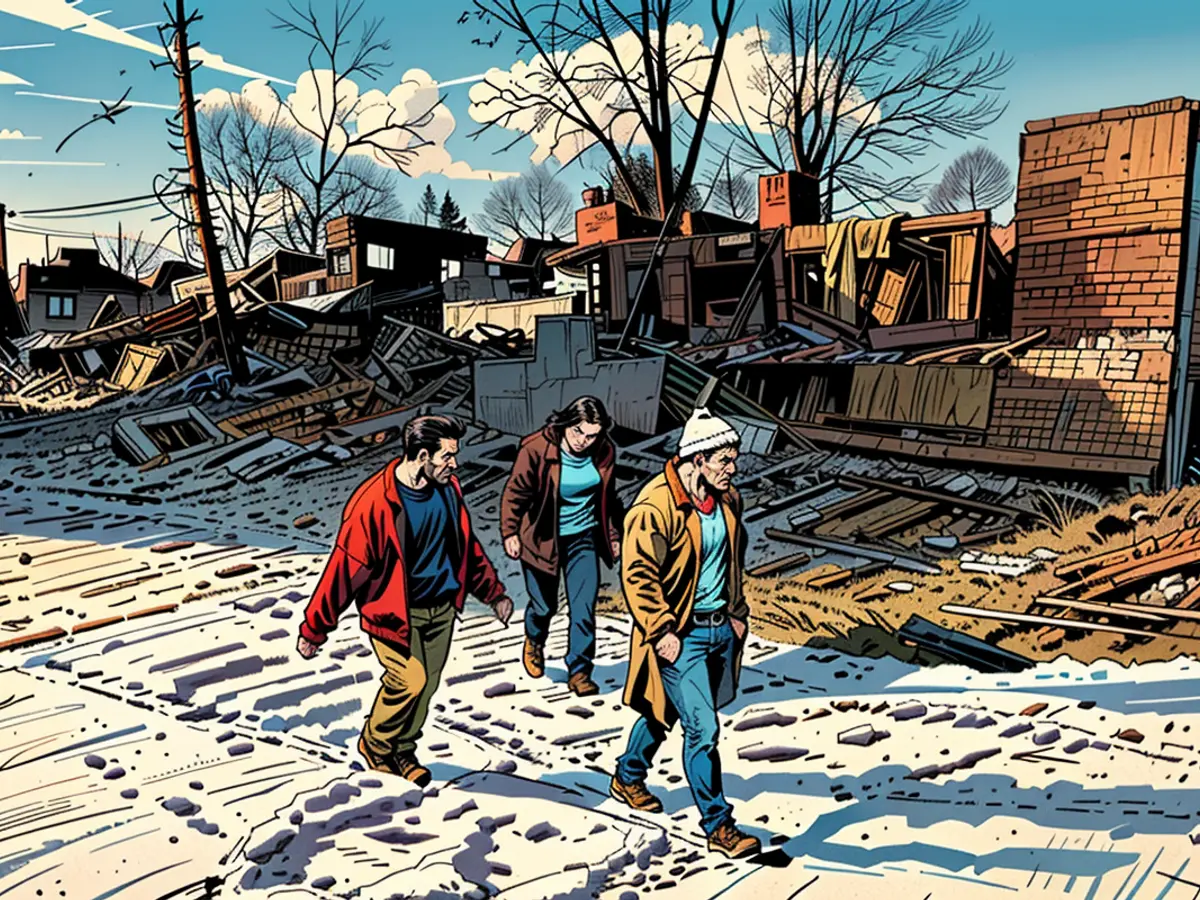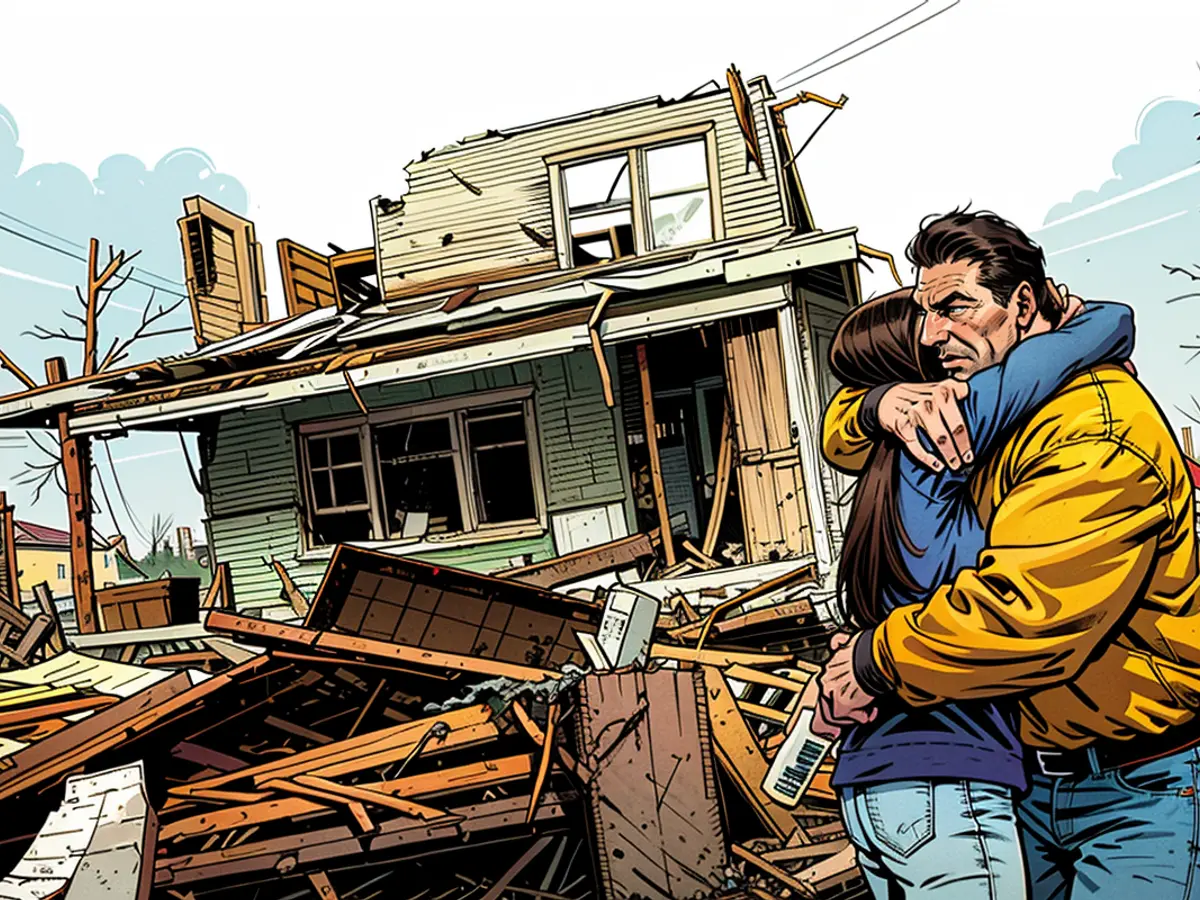IS AMERICA READY FOR DISASTER?
- This CNN Opinion series brings you expert viewpoints on how we can better prepare for catastrophes:
- The billion-dollar disasters around the corner
- In the blink of an eye, a wildfire changed everything
- It’s time to evacuate. But why won’t people flee the encroaching disaster?
- Our disaster responders are exhausted. This puts Americans at risk
- Many people can’t physically flee disasters. Too often, we fail to help them
- ‘The big one’ disaster could happen in our lifetime. Can we even be ready?
- We’re neglecting pets in disasters — with tragic consequences
- Americans don’t have enough in the bank to weather unrelenting disasters
Opinion: Why there is no such thing as a ‘natural’ disaster
On fields of rubble that were once bustling neighborhoods, I saw people starting anew. One woman remains seared in my memory: She’d found a dented coffee can, filled it with soil and planted seeds. Green shoots were already growing toward the sun.
Even in the bleakest, seemingly hopeless moments, people gravitate toward nature’s ability to renew and restore. But nature is our ally in more ways than one. By making nature a core part of our disaster recovery strategies — leveraging all the benefits that forests and other ecosystems provide — we can rebuild communities stronger and more resilient than before.
Charting a safer, more resilient course means first acknowledging that there is no such thing as a “natural disaster.” The word “natural” implies these events are entirely out of our control, thereby absolving us of the responsibility to prepare and reduce risk from natural hazards.
But when the ground starts to shake, or floodwaters rush in, it’s not nature’s wrath that’s ultimately responsible for the death toll and destruction. It’s vulnerable social, physical and ecological systems — communities living with inadequate water, sanitation, shelter and healthcare, poorly built and maintained infrastructure, and degraded forests, wetlands and coral reefs unable to provide protection from storms.
Because disasters reveal our vulnerabilities, they reflect the choices we make as a society. When we destroy and degrade much of the natural world, we make communities more vulnerable to disasters.
Take our dwindling forests. Cutting down trees removes root systems that anchor the soil and vegetation that soaks up rainfall and protects topsoil from erosion. Without the storage capacity these natural systems provide, the risk of devastating floods and landslides increases. When we channelize riverbeds and build on floodplains, we alter how and when water moves through the landscape. When we remove mangroves and sand dunes along the coast, we expose the shoreline to storm surge.

Nature is fundamental to supporting life on Earth, adapting to a changing climate and reducing disaster risk. Consider a few ways in which communities across the globe are showing what’s possible when we work with nature instead of against it.
One of the core principles of disaster response is “first, do no harm,” and that begins with a thorough post-disaster assessment. After a magnitude 7.3 earthquake in Nepal killed more than 8,000 people and destroyed more than a quarter million homes in 2015, the government conducted a rapid environmental assessment to learn how nature was affected by the disaster — and, just as importantly, how it might be affected by the rebuilding process.
Nepal’s assessment served as a blueprint for “building forward” in a way that preserves rather than depletes the natural systems and resources that people need to survive and thrive. By following Nepal’s example and exploring how best to work with the environment, other communities in similar straits can ensure they are better prepared for the future, whether that means using landscape planning to determine the safest locations to rebuild or identifying which crops are most resilient to climate change.

The process of building forward could include, among other things, the adoption of 21st-century clean-energy systems. After a powerful EF-5 tornado destroyed 95% of the town in 2007, Greensburg, Kansas, set sustainable rebuilding goals and integrated wind, solar and geothermal energy into their reconstruction plans. Manmade disasters have also imparted lessons here: In Ukraine, where ongoing war has severely damaged the energy sector, the government has responded by shifting from high-emission thermal power, which harnesses energy from steam, to a renewable energy mix that includes wind, solar, biofuel and battery storage.
Continued reliance on fossil fuels adds fuel to the fire; by reducing harmful carbon emissions, communities like Greensburg and nations like Ukraine are helping to mitigate worse climate impacts. Moreover, their embrace of clean energy adds much-needed redundancy. The fact that many Texans were still without power nearly two weeks after Hurricane Beryl made landfall — amid record summer heat — underscores the perils of depending on a single energy source.
Natural and green infrastructure from wetlands to rain gardens and green roofs — in addition to supporting a diverse array of life — can help communities absorb rainwater, reduce water pollution and regulate temperature. In the wake of Hurricane Stan in 2005, Guatemala and Mexico diversified their farming systems to improve resilience and reduce future disaster risk. Likewise, after Hurricane Michael practically wiped out Tyndall Air Force Base in Florida in 2018, the military bolstered the base’s natural defenses against storm surges by reinforcing dunes, restoring marshes, planting seagrass beds and engineering oyster reefs.
Even the selection of building materials makes an enormous difference. After the 2021 Marshall Fire, the costliest wildfire in Colorado’s history, some rebuilding projects used sustainable materials such as compressed earth blocks. In doing so, they can reduce production and construction costs, provide enhanced protection from fire and flooding and reduce the extraction of more natural resources, which can cause further environmental damage that makes communities more vulnerable to disasters.
In many countries, the United Nations and others have utilized earthquake debris to build homes, infrastructure and riverbank reinforcements. The scale and number of disasters around the world means we are generating a massive amount of disaster debris. Rather than dumping that debris in wetlands or offshore where it can kill seagrass beds and reefs that protect us from storm surges, we can put it to use rebuilding roads and other infrastructure.

We have a choice. We can rebuild the same vulnerabilities by relying only on traditional technology, engineering and materials, or we can embrace innovation and rebuild communities to be safer and more robust in the face of future shocks and stresses.
This choice should not be reserved only for a few select people in positions of power. If communities decide to integrate the power of nature into disaster mitigation solutions to prevent, recover from and rebuild after catastrophes, it’s all hands on deck. By working together across society, policymakers, humanitarians, engineers, community organizers, environmentalists, urban planners, lawyers, business owners, nonprofit groups and everyday citizens can help their communities withstand, recover and rebuild from crises.
This is exactly the kind of cross-disciplinary approach that made Greensburg, Kansas, a success story and a model for the rest of the US and the world. Mayor Bob Dixson followed the science, fostered public-private partnerships and leveraged the unique strengths of local schools, church groups, city councils and more to mobilize a community-wide response.
The collective efforts and vision to recover from the tornado in Greensburg proved that these solutions go beyond partisan politics. You don’t need to believe in climate change to recognize the danger that fires, floods and other natural hazards pose to people, businesses and nature. You just need to recognize that we all have a vested interest in reducing disaster risk, and that environmental management is key to ensuring a safer and more secure future for your community.
Those who have learned from the impact of disasters know that resilient societies require resilient ecosystems — particularly in a world marked by a changing climate. From the small act of planting seeds in a coffee can, to restoring entire forests and wetlands, partnering with nature is essential to our survival.
- Inadequate consideration of nature's role in disaster recovery can lead to rebuilding vulnerable communities, as seen with poorly built and maintained infrastructure and degraded forests, wetlands, and coral reefs that fail to provide protection from natural hazards.
- Integrating natural resources into disaster mitigation efforts can significantly enhance community resilience. For instance, the adoption of clean energy systems, such as wind, solar, and geothermal energy, can reduce carbon emissions and provide redundancy, as demonstrated by Greensburg, Kansas's response to a tornado disaster.







